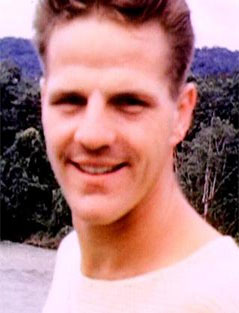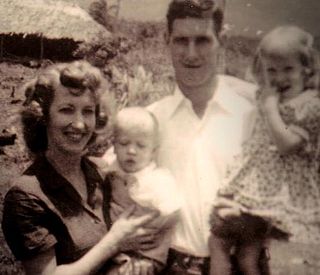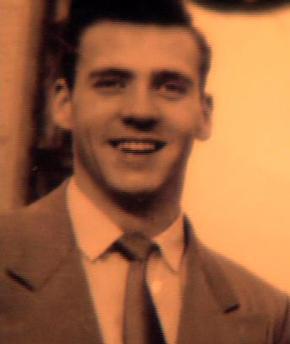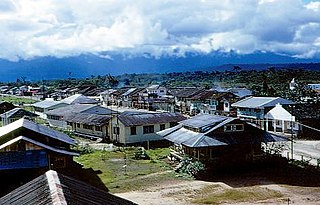
The Napo River is a tributary to the Amazon River that rises in Ecuador on the flanks of the east Andean volcanoes of Antisana, Sincholagua and Cotopaxi.

The Nanay River is a river in northern Peru. It is a tributary of the Amazon River, merging into this river at the city of Iquitos. The lower part of the Nanay flows to the north and west of the city, while the Itaya River flows to the south and east. Other nearby settlements on the Nanay River include the villages of Santo Tomás, Padre Cocha, and Santa Clara. During periods when the river is low, the many beaches along the Nanay are popular destinations. The Nanay belongs entirely to the lowlands, and is very crooked, has a slow current and divides into many canos and strings of lagoons which flood the flat, low areas of country on either side. It is simply the drainage ditch of districts which are extensively overflowed in the rainy season. Captain Archibald Butt USN, ascended it 195 mi (314 km), to near its source. A part of the Nanay River flows through the Allpahuayo-Mishana National Reserve.

The Pastaza River is a large tributary to the Marañón River in the northwestern Amazon Basin of South America.

The Huaorani, Waorani, or Waodani, also known as the Waos, are an Indigenous people from the Amazonian Region of Ecuador who have marked differences from other ethnic groups from Ecuador. The alternate name Auca is a pejorative exonym used by the neighboring Quechua natives, and commonly adopted by Spanish-speakers as well. Auca means 'savage'.

Philip James Elliot was an American Christian missionary and one of five people killed during Operation Auca, an attempt to evangelize the Huaorani people of Ecuador.

The Putumayo River or Içá River is one of the tributaries of the Amazon River, southwest of and parallel to the Japurá River.

End of the Spear is a 2005 American biographical adventure drama film directed by Jim Hanon, written by Bill Ewing, Bart Gavigan and Hanon, and stars Louie Leonardo and Chad Allen. The film recounts the story of Operation Auca, in which five American Christian missionaries attempted to evangelize the Waodani people of the tropical rain forest of Eastern Ecuador.

Operation Auca was an attempt by five Evangelical Christian missionaries from the United States to bring Christianity to the Waodani or Huaorani people of the rain forest of Ecuador. The Huaorani, also known pejoratively as Aucas, were an isolated tribe known for their violence, against both their own people and outsiders who entered their territory. With the intention of being the first Christians to evangelize the previously uncontacted Huaorani, the missionaries began making regular flights over Huaorani settlements in September 1955, dropping gifts, which were reciprocated. After several months of exchanging gifts, on January 3, 1956, the missionaries established a camp at "Palm Beach", a sandbar along the Curaray River, a few kilometers from Huaorani settlements. Their efforts came to an end on January 8, 1956, when all five—Jim Elliot, Nate Saint, Ed McCully, Peter Fleming, and Roger Youderian—were attacked and speared by a group of Huaorani warriors. The news of their deaths was broadcast around the world, and Life magazine covered the event with a photo essay.

Roger Youderian was an American Christian missionary to Ecuador who, along with four others, was killed while attempting to evangelize the Huaorani people through efforts known as Operation Auca.

Theophilus McCully was a Christian missionary to Ecuador who, along with four other missionaries, was killed while attempting to evangelize the Huaorani people, through efforts known as Operation Auca.

Shell is a city located on the western edge of the Ecuadorian Amazon and in the eastern foothills of the Andes. It is located about 94 miles (151 km) southeast of Quito, and roughly 4 miles (6.4 km) west of the provincial capital, Puyo. Its name comes from the Royal Dutch Shell corporation.
Water supply and sanitation in Panama is characterized by relatively high levels of access compared to other Latin American countries. However, challenges remain, especially in rural areas. Panama has a tropical climate and receives abundant rainfall, yet the country still suffers from limited water access and pollution. Intense El Niño periods, periodic droughts, reduce water availability. Multiple factors like urbanization, impacts of climate change, and economic development have decreased water resources. The high frequency of floods in recent years and the lack of corresponding measures resulted in tension among the local population. Rapid population growth in recent decades led to an unprecedented increase in freshwater demand. Regional inequality exists in water resources and water governance. An estimated 7.5-31% of Panama's population lives in isolated rural areas with minimal access to potable water and few sewage treatment facilities.
Water resources and irrigation infrastructure in Peru vary throughout the country. The coastal region, an arid but fertile land, has about two-thirds of Peru’s irrigation infrastructure due to private and public investment aimed at increasing agricultural exports. The Highlands and Amazon regions, with abundant water resources but rudimentary irrigation systems, are home to the majority of Peru's poor, many of whom rely on subsistence or small-scale farming.
While Peru accounts for about four per cent of the world's annual renewable water resources, over 98% of its water is available east of the Andes, in the Amazon region. The coastal area of Peru, with most of economic activities and more than half of the population, receives only 1.8% of the national freshwater renewable water resources. Economic and population growth are taking an increasing toll on water resources quantity and quality, especially in the coastal area of Peru.
There is a long and established framework for water resources management in Colombia. The Environment Ministry and up to 33 Regional Authorities, are in charge of water resources management and policies at the national and regional and watershed level, respectively. Other sectoral ministries are in charge of water demand for energy, water supply and sanitation and water for irrigation.

Lake Sibinacocha is a lake in Peru. It is ranked as the 22nd highest lake in the world. It is located in the Cusco Region, Canchis Province, Pitumarca District. The lake is situated at a height of approximately 4,873 metres (15,988 ft), about 15.19 km long and 2.86 km at its widest point, and drains into the Amazon River. Sibinacocha lies in the Vilcanota Range, south of Chumpe and southwest of Condoriquiña.

The Itaya River is a tributary of the Amazon River via the Nanay River in northern Peru. The Itaya flows alongside the city of Iquitos and the district of Belén.










